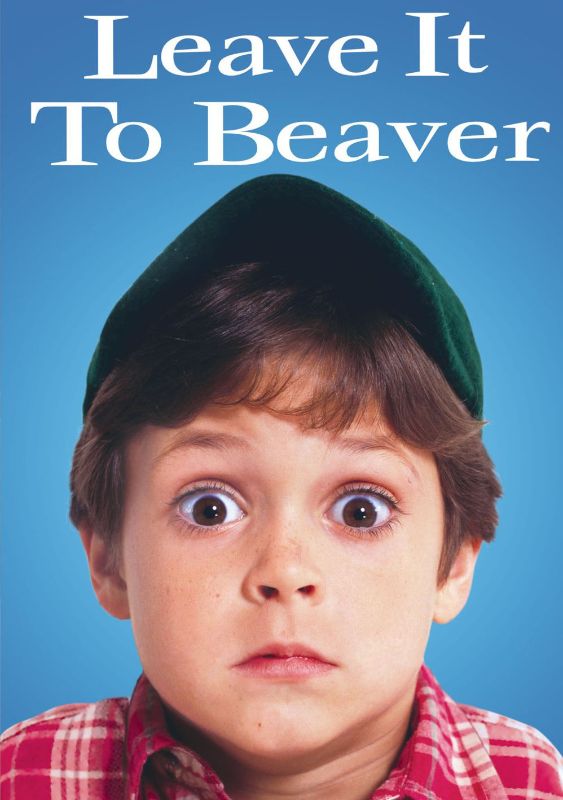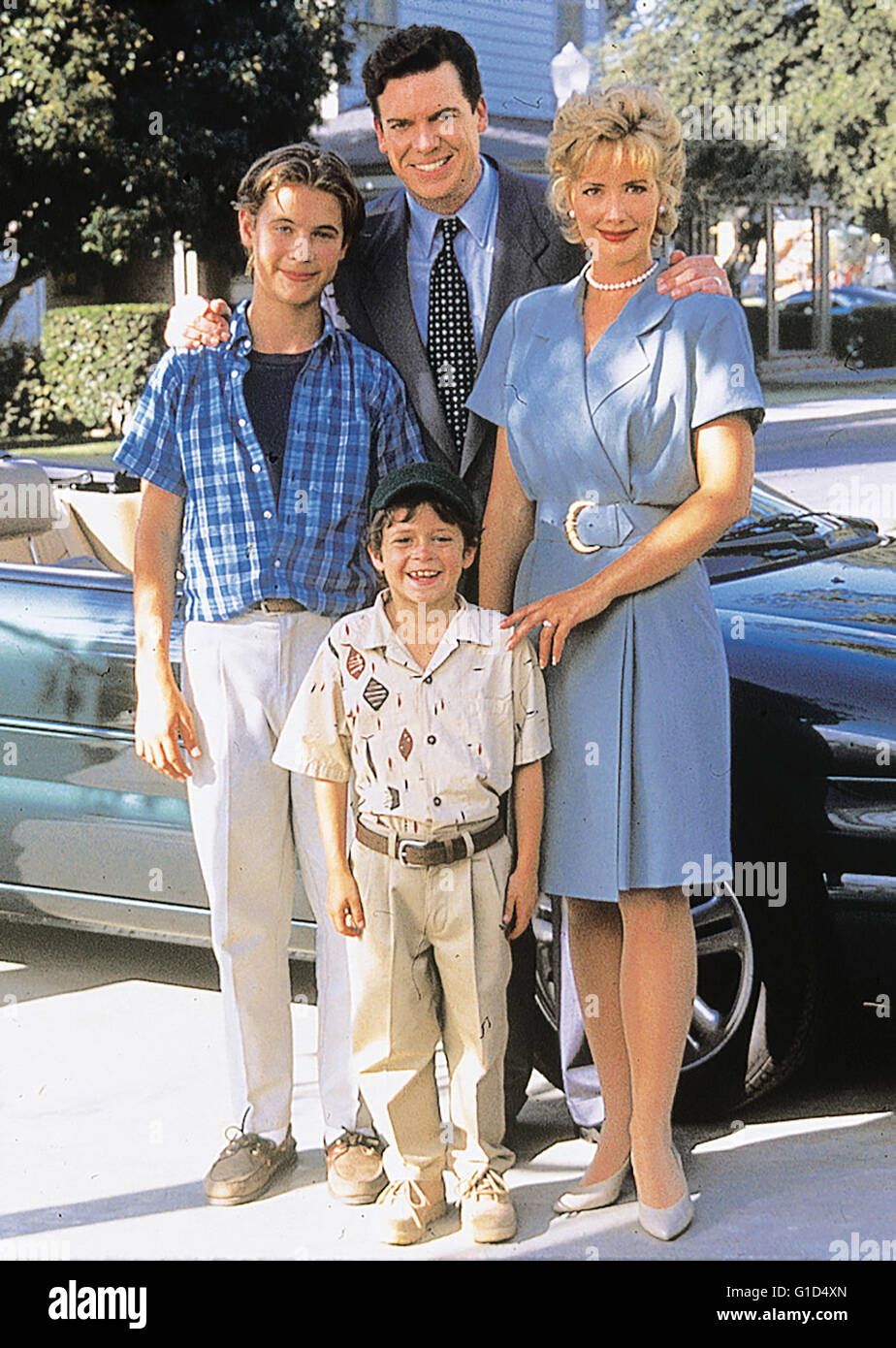What exactly does Leave It to Beaver conjure in your mind? For many, it immediately evokes a vision of the quintessential American family, a perfectly curated snapshot of suburban life from a bygone era, although it has a deeper significance than just that.
The phrase, originating from the immensely popular television show of the same name, first aired in the late 1950s and continued through the early 1960s, quickly establishing itself as a cultural touchstone. The show's enduring appeal stems from its depiction of the Cleaver family: Ward, the wise and patient father; June, the ever-gracious homemaker; and their two sons, Wally and, of course, the titular Beaver, whose everyday adventures and misadventures form the core of each episode. This family dynamic, set against the backdrop of a typical suburban neighborhood, became a template, influencing countless other sitcoms and shaping perceptions of the ideal American family for decades to come.
The show itself, a cornerstone of American television history, was initially broadcast by CBS before moving to ABC. It starred Barbara Billingsley as June Cleaver, Hugh Beaumont as Ward Cleaver, Tony Dow as Wally Cleaver and Jerry Mathers as Theodore Beaver Cleaver. The show portrayed the trials and tribulations of everyday life in an American suburb, highlighting the importance of family values, moral lessons, and the challenges of growing up. The series resonated deeply with audiences across the country and also created a platform for the perfect nuclear family, showcasing an ideal household at the time. This portrayal reinforced stereotypes, such as the dutiful homemaker and the wise father.
The term Leave It to Beaver has permeated the cultural lexicon, evolving to encompass a range of meanings beyond its literal association with the television show. The phrase can signify a sense of idyllic simplicity, a return to a simpler time, or even a slightly tongue-in-cheek reference to perceived naiveté or a lack of awareness of the complexities of modern life. In some contexts, it can be used as a casual expression of dismissal, a way of saying don't worry about it or everything will be alright. And while that might appear to be a simple concept there is a depth and history behind the show.
The show's cultural impact is undeniable. It provided a comforting escape for viewers, particularly in the post-World War II era, when Americans were seeking stability and a return to normalcy. The show's clean-cut image, its emphasis on family values, and its lighthearted approach to everyday challenges resonated with a nation eager for a sense of order and predictability. Leave It to Beaver became an artistic expression of a particular time in history. After the tumult of World War II, Americans longed for tranquility and order.
However, the show also played a significant role in shaping societal expectations and perpetuating certain stereotypes. The portrayal of June Cleaver as the ever-present, always-smiling homemaker, for example, reinforced traditional gender roles. While the show aimed to provide a positive and reassuring portrayal of family life, it has also been criticized for its idealized and often unrealistic depiction of suburban America. Critics have pointed out the lack of diversity in the show's cast, as well as its tendency to gloss over the more complex social issues of the time.
The show's influence extends beyond mere entertainment; it contributed to the shaping of cultural expectations. The clean-cut image, focus on family values, and lighthearted approach resonated with a nation seeking order. But it also has been the subject of criticism, particularly regarding its idealized portrayal of suburban life and the lack of diversity. These points highlight the multifaceted legacy of Leave It to Beaver, as it continues to be remembered and re-evaluated.
Moreover, the show's legacy continues to be debated and re-evaluated in the context of modern society. Its influence can be felt in various aspects of popular culture, from its impact on sitcoms to its portrayal of American values. The show provides a glimpse into the past, and it also prompts reflection on the values and aspirations of different generations. For instance, it offers insights into the evolution of family dynamics and the changing social landscape.
The show was, at its core, a reflection of its time. It depicted a vision of American life during a period of significant social change. As societal norms have evolved, the show's depiction of gender roles, social issues, and cultural values has been subject to increased scrutiny and debate. This context highlights the importance of understanding Leave It to Beaver not just as a television show but as a cultural artifact that provides valuable insights into the history of the United States.
The use of the phrase, Leave It to Beaver can also differ depending on the context. It can be a reference to the show itself, a way of saying, don't worry about it, or even something else entirely. For example, the term has been used in slang terms as well. The show depicted an idealized version of American suburban life, with a focus on the Cleaver family and their daily struggles and triumphs. However, over time, the term Leave It to Beaver has taken.
In a world often marked by complexity and rapid change, the phrase Leave It to Beaver serves as a reminder of the enduring appeal of simplicity, family, and a sense of belonging. The show might portray an idealized version of American life, but it still holds a special place in many people's hearts and memories. The show offers viewers a glimpse into a past and prompts reflection on the values of different generations. As we navigate the ever-changing landscape of the 21st century, the legacy of Leave It to Beaver continues to be felt, reminding us of the power of storytelling and the enduring human desire for connection, family, and a simpler way of life.
The show, Leave It to Beaver, originally aired on CBS before moving to ABC, showcasing the values of a typical American family. It remains an important piece of American television history.
| Person | Information |
|---|---|
| Barbara Billingsley | Played the role of June Cleaver |
| Hugh Beaumont | Played the role of Ward Cleaver |
| Tony Dow | Played the role of Wally Cleaver |
| Jerry Mathers | Played the role of Theodore Beaver Cleaver |
| Theme | Family, Suburban life, Coming of age, Morality |
| Setting | Typical suburban area in the United States |
| Genre | Situation Comedy (Sitcom) |
| Years Active | 1957–1963 |
| Network | CBS (Season 1), ABC (Seasons 2-6) |
| Origin | United States |
| Key Themes | Family values, Moral lessons, Everyday challenges |
| Legacy | Influence on sitcoms, Cultural touchstone |
| Notable Aspects | Idealized suburban life, Stereotypical family roles |
| Cultural Impact | Defined cultural values, Gender roles |
| Critiques | Idealized and unrealistic portrayal of suburban America |
Reference: Wikipedia



